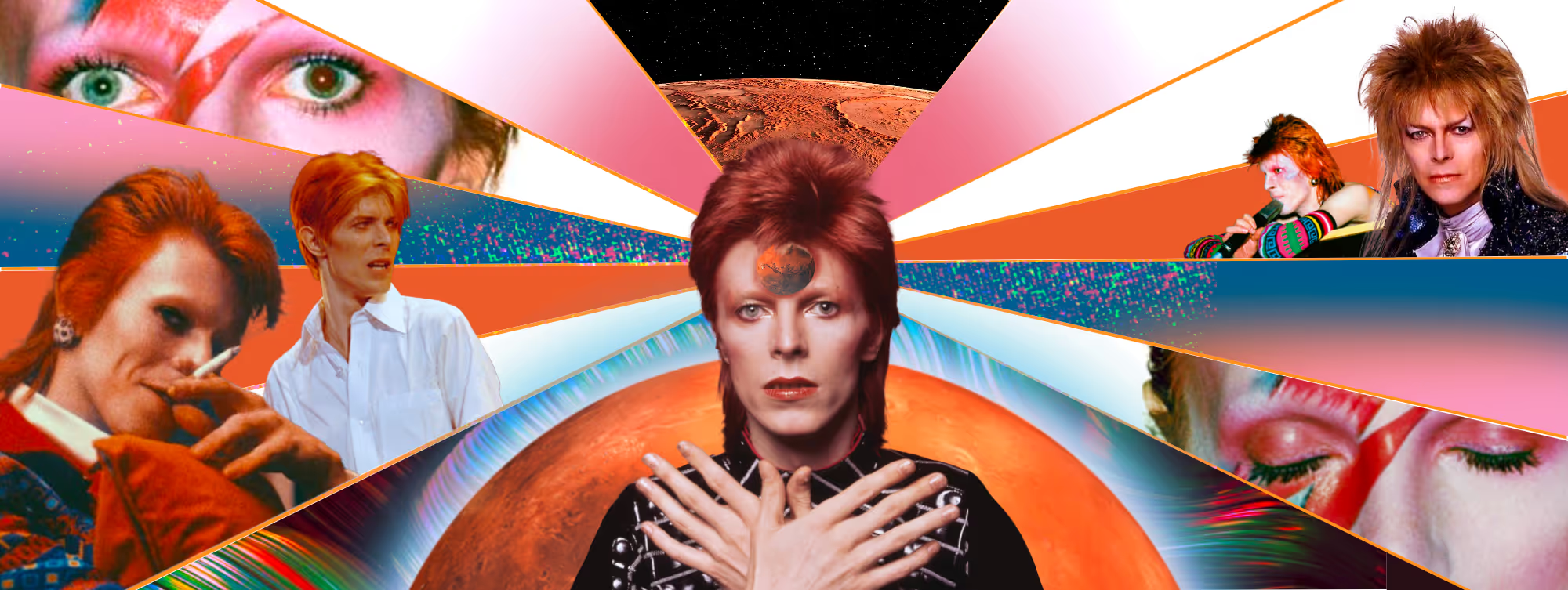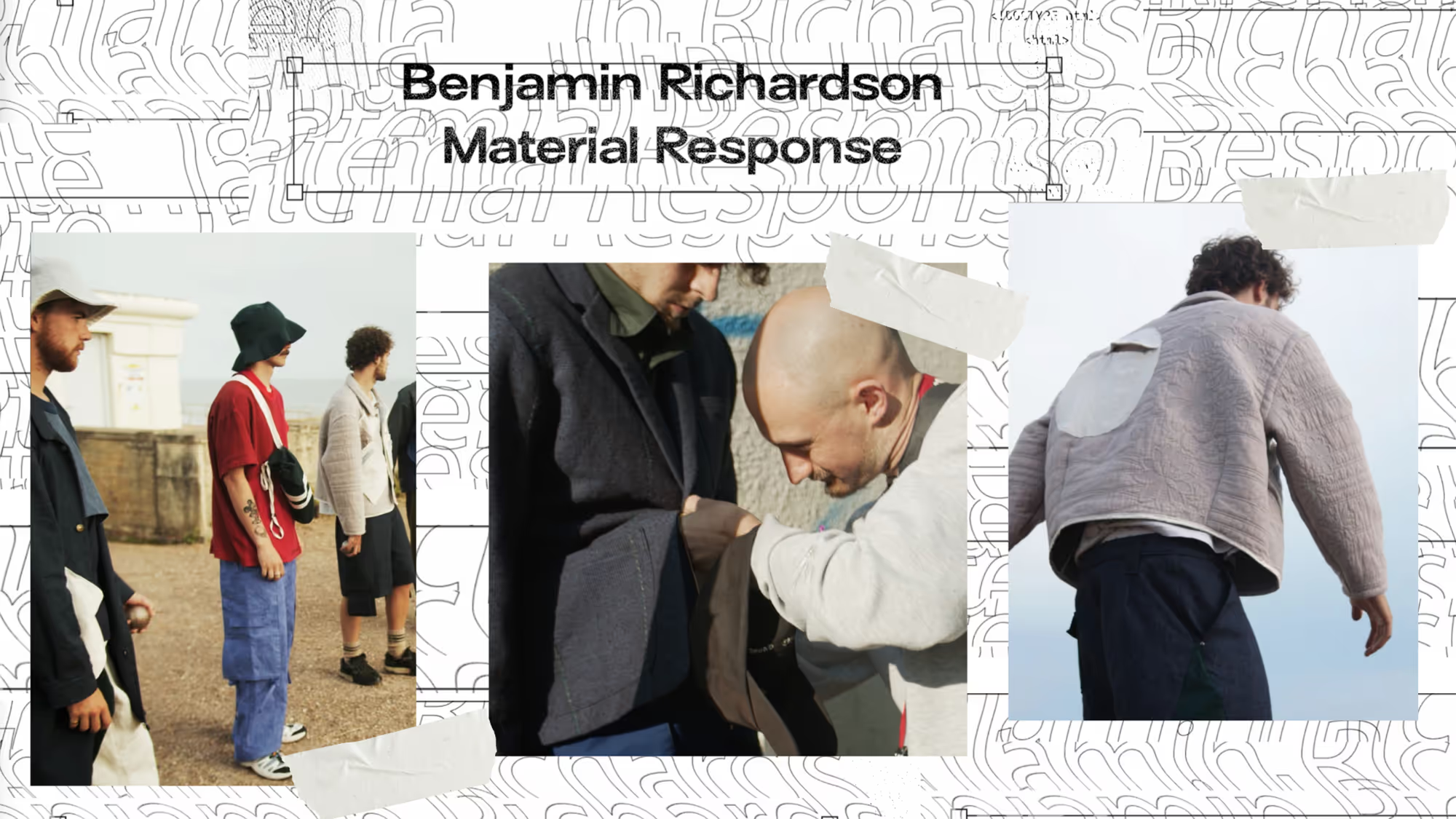
Living in BowieWorld: How David Bowie invented the Metaverse
By John Livesey
We’re all used to seeing David Bowie in dressup. Not just a singer but a shapeshifter, the glam-rock icon taught the world that ‘who we are’ and ‘how we look’ don’t need to be fixed realities. He ripped up the rulebook and invited us into a parallel universe, one where you could be whatever the fuck you want.
This universe of free-experimentation is reminiscent of the metaverse. First coined by Neal Stephenson in 1992, the concept of the 'metaverse' was firmly planted in the same science fiction fantasies that characterize Bowie’s early albums.
Stephenson imagined a world that existed totally online. It would allow users to access a form of life outside the body, free from physical or cultural constraints. In the metaverse, humans exist in the form of avatars, not unlike the various personae that Bowie invented for himself. Lazarus, the Thin White Duke, the Goblin King, Aladdin Sane: with every album he gave us, Bowie also inhabited a new character. In the metaverse users have permission to be a similar kind of shape-shifter. Suddenly anyone can be Ziggy Stardust.
Who do you want to be Today?
Definitely one of the great appeals of virtual existence is that it gives you the chance to change the way you look, how you move and who you interact with. On software like Decentraland, Roblox, or Fortnite, users create a new version of themselves: attending virtual events, making virtual friends and engaging in virtual marketplaces.
Brands like Gucci, Estau Lauder and Sephora have even started catering to these virtual consumers with skincare, jewelry and clothes for their avatars. These meta-closets join NFTS and crypto-currency in redefining what kind of markets consumers can engage in.
The metaverse - like Bowie’s music - represents particularly important possibilities for queer and gender non-conforming people. As Mike Proulx, the research director of Forrester, describes, “since avatars are customised, one’s virtual identity can be as fluid as a user wants it to be, expressed in an infinite number of permutations”.
Bowie never had a need for the labels of gender, sexuality or species. He moved between them, ever-curious about the possibility of reinvention. The metaverse beckons all of us towards the same possibilities.
David Bowie has Entered the Group Chat
It should come as no surprise that, during his career, Bowie frequently expressed a fascination in new technologies. In a riveting 1999 interview with Jeremy Paxman, Bowie tells the presenter that if he had been a teenager today he wouldn’t go into music but would be experimenting online. The thought of Bowie as a Tik-Tok influencer is comical. However, as he saw it, ‘the internet, now, carries the flag of the subversive and possibly rebellious, the chaotic and the nihilistic’.
On the Internet, Bowie believed there was no singularity but ‘always 2,3,4,5 sides to every question’. For Bowie the internet ‘absolutely establishes and shows us that we are living in total fragmentation’. It was not a ‘tool’, but an ‘alien life form’, reflecting back human existence in all its plurality and potential.
In his late career, Bowie started to innovate with digital technologies in order to change the way fans interacted with his music. In 1996, he released the single ‘Telling Lies’ via his website. This was the first downloadable single by a major music artist. In 1998, he built on this project with BowieNet, an Internet Service Provider that also offered global dial-up web connection.
The aim was always to collapse the boundaries between artist and listener. As Bowie told Paxman, on the internet ‘the interplay between the user and provider will be so in sympatico, it’s going to crush our ideas of what mediums are all about’. The internet was a revolutionary interface that brought everyone together in a new virtual world.
BowieWorld: the debutant metaverse
This virtual world took on yet another form for Bowie at the end of the century. In 1999, he launched his most ambitious digital project yet: BowieWorld. BowieWorld was a chat environment that could be accessed via his website. Users navigated a three-dimensional city designed by the singer. In this virtual world, fans could interact with each-other and even an avatar of Bowie himself.
BowieWorld was the first 3D, interactive virtual platform: the metaverse’s debut act. This new internet platform not only brought the artist and his fans into one space but allowed both to take on a new virtual life.
Perhaps we might view the possibilities of the meta-verse as a logical extension of the world Bowie created for us all. His was a universe of ever-shifting identities where every outfit was a new avatar, a new character, a new perspective on life. Why shouldn’t we get the same opportunity?
Life in BowieWorld
David Bowie was a popstar who showed us all how imagination and invention are the most powerful of partners. In the Metaverse he found the embodiment of these ideals, a space to be whatever you want to.
New virtual softwares offer a plethora of possibilities for how we represent and understand identity. Just like Bowie himself, it sometimes feels like an ‘alien life form’. And now it’s landed, we need to get a grip of it. Life on Mars? Who knows. We’re all living in BowieWorld anyway.





